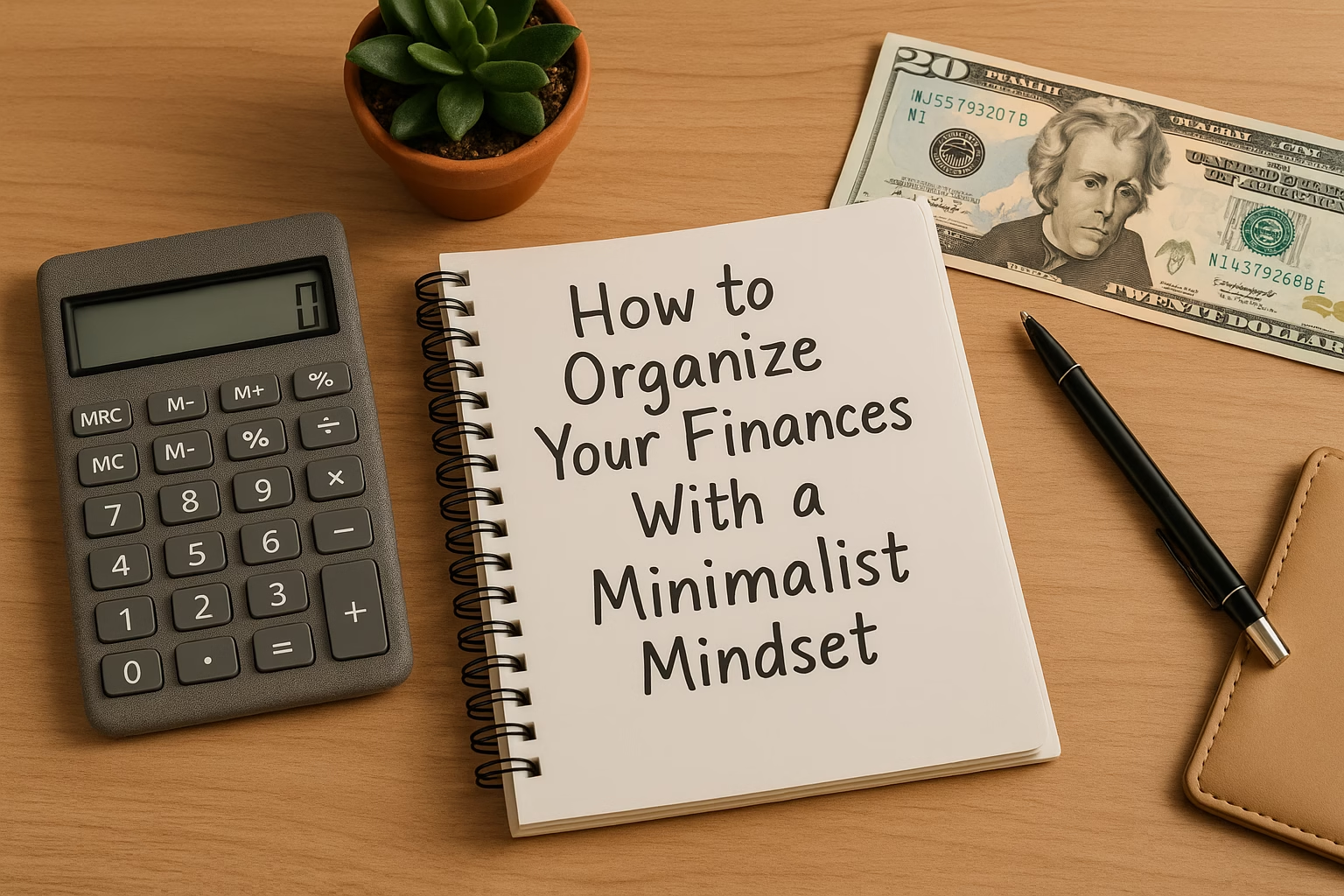Managing money doesn’t have to be stressful or complicated. In fact, applying a minimalist mindset to your finances can bring clarity, reduce anxiety, and help you focus on what truly matters. Minimalist finance isn’t about deprivation—it’s about aligning your spending, saving, and investing habits with your core values.
Whether you’re overwhelmed by bills, living paycheck to paycheck, or simply looking to simplify your financial life, this article will guide you through practical steps to organize your finances the minimalist way.
What Does a Minimalist Financial Life Look Like?
A minimalist financial approach emphasizes simplicity, clarity, and intention. It means:
-
Spending less on things that don’t add value
-
Cutting financial clutter (like unnecessary subscriptions or debt)
-
Creating a streamlined budget that reflects your priorities
-
Making money decisions with long-term peace in mind
The goal isn’t to restrict joy—it’s to remove the noise so you can live and spend more meaningfully.
Step 1: Define What Financial Freedom Means to You
Minimalism begins with intention. Ask yourself:
-
What does financial freedom look like in my life?
-
What do I want money to do for me?
-
What purchases or expenses bring genuine happiness or utility?
Maybe it’s about being debt-free, affording to travel, starting your own business, or just having breathing room in your budget. Your answers will shape how you manage and organize your money.
Step 2: Track Every Dollar for 30 Days
Before you can simplify, you need visibility. For the next month, track all of your income and expenses. You can use:
-
A spreadsheet
-
An app like Mint, YNAB, or EveryDollar
-
Pen and paper
Be honest and detailed. Include everything from rent and groceries to small purchases like coffee or streaming subscriptions. You’ll quickly start to see patterns—both helpful and harmful.
Step 3: Eliminate Financial Clutter
Just like physical clutter, financial clutter builds up quietly. Start simplifying by cutting out what no longer serves you:
-
Cancel unused subscriptions or memberships
-
Consolidate accounts where possible
-
Declutter your wallet and shred outdated cards
-
Unsubscribe from marketing emails that trigger impulse spending
This process creates mental space and reduces the chances of “leakage” in your budget.
Step 4: Create a Simple Budget Based on Priorities
A minimalist budget isn’t about tracking 40 categories—it’s about managing a few key areas:
-
Essentials – housing, food, transportation, insurance
-
Goals – savings, debt repayment, investments
-
Wants – dining out, hobbies, entertainment
Use the 50/30/20 rule as a starting point:
-
50% to needs
-
30% to wants
-
20% to savings and debt
The key is to focus on what truly matters and drop the rest.
Step 5: Automate Everything You Can
Automation is a minimalist’s best friend. It reduces mental load and the risk of missing important payments.
Automate:
-
Bill payments
-
Savings transfers
-
Investment contributions
You’ll simplify your routines, avoid late fees, and make steady progress toward your goals without thinking about it every day.
Step 6: Reframe the Way You Spend
Instead of asking “Can I afford this?”, ask:
-
Does this align with my values?
-
Will this bring lasting satisfaction or just temporary pleasure?
-
What am I giving up by spending this money here?
Minimalist finance means being intentional with every dollar. It’s not about denying yourself things—it’s about directing money toward what adds meaning and value to your life.
Step 7: Build an Emergency Fund (Even a Small One)
Financial peace comes from preparedness. Even a modest emergency fund (e.g., $500 to $1,000) can prevent stress and stop you from falling back into debt when life happens.
Start small, save consistently, and celebrate progress.
Step 8: Embrace Quality Over Quantity
One hallmark of minimalist living is choosing quality over quantity—and that applies to spending, too.
-
Buy fewer, better things that last longer
-
Avoid fast fashion, cheap gadgets, or single-use purchases
-
Invest in experiences or tools that improve your life in the long term
This mindset helps you save money over time and feel better about where your dollars go.
Step 9: Check In Monthly (and Adjust)
Intentional living is a process. Set a monthly money date with yourself (or your partner) to:
-
Review expenses and income
-
Adjust your budget or goals
-
Reflect on what’s working and what isn’t
This habit helps keep your finances in alignment with your life, as both inevitably evolve.
Step 10: Focus on Progress, Not Perfection
Minimalist finance doesn’t mean never making mistakes. It means learning, adapting, and moving forward. Don’t beat yourself up for overspending occasionally or slipping on savings.
The point is to stay mindful and keep simplifying.
Final Thought: Financial Freedom Starts With Less
You don’t need to earn six figures or master every budgeting app to gain control of your finances. All it takes is a shift in mindset—from more, faster, and louder to less, slower, and clearer.
By embracing minimalist principles in your financial life, you reduce stress, gain clarity, and make space for what really matters. Simplicity isn’t a sacrifice—it’s a strategy.
So take the first step today. Start small, stay consistent, and let simplicity guide your path to financial freedom.
https://www.theminimalists.com/finances/

